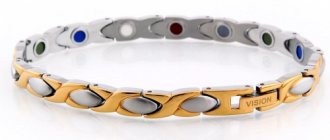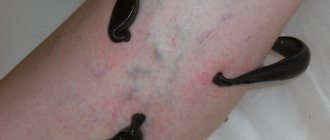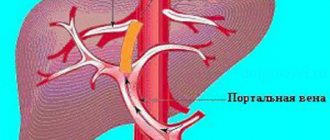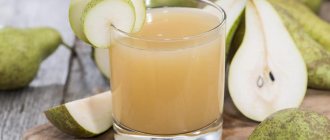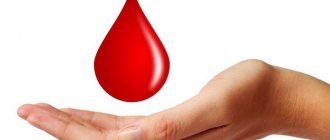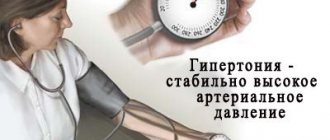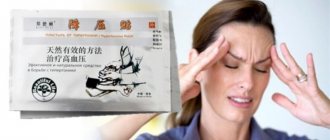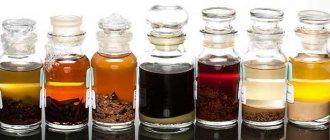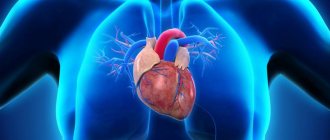25.09.2017
Last modified: June 6th, 2020 at 12:14 pm
Hypertensive patients, on the recommendation of doctors, take antihypertensive drugs. These blood pressure lowering pills do not eliminate the cause of the disease. Medicine classifies hypertension as a chronic pathology, offering symptomatic lifelong therapy.
To reduce the harm of side effects, many people combine medications with alternative remedies. This practice allows you to improve the condition of the body, in the future reduce the consumption of medications to a minimum, and ideally completely abandon them. One of these methods, leeches for hypertension, is a subject of discussion among both patients and medical professionals, whose conflicting reviews attract increased attention to it.
Something new - or well forgotten old
The history of leech treatment goes back centuries, the trace is lost in ancient civilizations. The popularity of the technique in time immemorial is evidenced by references in the Bible, the Koran, paintings on the tombs of Egyptian pharaohs...
The method was also widely used in medieval Europe. The time of its heyday came at the turn of the 18th – 19th centuries and made the leech the main remedy. Abuse (use for all diseases by hundreds in one session) discredited the method, many doctors abandoned it, and the advent of antibiotics in the 20th century led to oblivion.
The second coming of leeches into medicine began relatively recently. There has been renewed interest due to scientific research into the secretions released by the animal when it bites. The results, published in the 1990s, shocked medical science: a dozen and a half enzymes were found in the vampire’s saliva, which have a healing effect on the human body.
Hirudotherapy is officially recognized as a medical procedure in many countries, including Russia. The medical leech is included in the Register of Medicines of the Russian Federation.
What is a medicinal leech?
Hirudotherapy gets its name from the Latin name of the bloodsucker “hirudo”. Leech (from the word drink) is a freshwater worm of the annelid class. In the head part there is a suction cup, in it there is a mouth with three rows of chitinous teeth (one hundred pieces in each). It feeds on the blood of victims, and the liquid remains in the stomach for so long that one “refueling” is enough for two years of carefree life. Has five pairs of eyes, sense of smell and hearing.
Important! It is impossible to treat wild inhabitants of natural bodies of water due to the risk of infection, which they may be carriers of.
Of the 400 species of leeches, only three are used for treatment, united under the general term Hirudo Medicinalis:
- Medical,
- Pharmacy,
- Eastern.
To grow “medical employees,” there are farms that have a production license. Here, specialists work in sterile laboratory conditions. Certified products supplied:
- to pharmacies, where you should purchase it;
- directly to medical institutions, usually based in sanatoriums, which provide therapy.
Attention! When purchasing medicinal leeches in pharmacies, ask for a certificate of conformity.
Leeches are kept in glass jars covered with thick fabric with clean, transparent water in cool, dark rooms where there are no foreign odors or noise.
Important information: Chicory increases or decreases blood pressure
Leech quality indicators are regulated by the regulatory document FS 42-702-97. After a single use, the worm is destroyed in a 10% chloramine solution and disposed of.
How to place a leech correctly
First of all, you need to prepare a bandage, cotton wool, adhesive tape, iodine, tweezers and two clean jars with a narrow neck. Next, you need to familiarize yourself with the scheme for placing leeches for hypertension:
- Treat the skin with an alcohol solution;
- If the leeches were stored in the refrigerator, then they must be warmed up naturally (in a dry jar) to room temperature;
- Then take out one leech, carefully rinse it under running water at room temperature and apply it to the desired point;
- After the leech attaches itself, a transparent container, for example, a small glass, is placed on top of it. This will allow you to control the suction process;
- After the time has passed (as recommended by the doctor), the leech is removed and placed in a jar with a lid;
- After weaning the leech, the wound must be treated with iodine, a gauze swab applied and secured with an adhesive plaster.
Used leeches after treatment of hypertension are disposed of; reuse is strictly prohibited. Destruction occurs by placing the leeches in a jar of chloramine, and after euthanasia they are placed in a paper envelope and burned.
Impact on the body
Adherents of hirudotherapy explain the benefits of treatment by the simultaneous influence of three factors.
- Reflex. The animal bites through the skin in certain places, similar to a needle puncturing active points during acupuncture. At the moment of a bite, the creatures emit ultrasonic vibrations, which have a positive effect on damaged tissue.
- Mechanical. Loss of blood reduces pressure in blood vessels, stimulates hematopoiesis and the functioning of the immune system. The pulse slows down, which strengthens the myocardium. The influx of fresh blood ensures the delivery of oxygen and nutrients to the lesion. The swelling goes away and the pain goes away.
- Biological. Leech saliva, once in the blood, brings with it biologically active substances. Hyaluronidase, increasing tissue permeability, helps them reach their destination and have a therapeutic effect. The active components of the secretion produce anti-inflammatory, anti-viral and anti-microbial effects.
After the session, bleeding continues for several hours. This is normal and is due to the action of the enzyme hirudin. In addition, under the influence of a large number of active substances, lymph flow and intercellular exchange increase. Itching appears as a reaction of the body to a foreign protein.
Opponents of the method, noting the lack of scientific evidence, question the effectiveness and safety of the procedure.
According to patient reviews, after two or three sessions, mood, general condition and performance improve.
Indications for use
Hirudotherapy is recommended for hypertension, atherosclerosis, varicose veins, thrombophlebitis, and early stages of diabetes. The benefits of the procedure are observed in complex treatment in the following areas:
- gynecology (menstrual irregularities, ovarian dysfunction, adnexitis, mastitis, infertility);
- urology (prostatitis);
- neurology (migraines, neuritis, radiculitis, epilepsy, sleep disorders);
- dermatology (acne, psoriasis, furunculosis, skin diseases);
- cardiology (angina pectoris, myocardial infarction);
- ophthalmology (keratitis, glaucoma);
- surgery (fractures, hematomas).
Problems of patients with the musculoskeletal system (osteochondrosis, arthrosis, myositis), excess weight, gastrointestinal tract, bronchi, lungs or kidneys are indications for prescribing a course of therapy.
Prevention
Hirudotherapy can be used not only in the treatment of hypertension, but also as its prevention. Regular use of the procedure improves the elasticity and tone of blood vessels, strengthens the body's immune forces, and also normalizes the functioning of the heart muscle. The active components contained in the saliva of worms are capable of breaking down fatty deposits, which is very important for overweight people.
The unique properties of hirudin make it possible to use it for diseases of the musculoskeletal system, gynecological, urological and neurological diseases.
Leeches not only treat a person for a specific disease, but also heal the body as a whole.
Each organism is special and reacts differently to hirudin. If you do not notice results, do not let the situation take its course, but be sure to seek help from a doctor. Perhaps this decision will save you from complications and health problems later. Even if the diagnosis of hypertension is not confirmed, it is better to play it safe in advance than to deal with the consequences of this pathology later.
Features of treatment for hypertension
Every third elderly person in Russia has hypertension. The disease does not bypass other age categories either. The main symptom of hypertension is hypertension. This term refers to a sustained increase in blood pressure to 140/90 and above. There are three stages:
- Initial. Characterized by a short-term increase in pressure up to 150/90.
- Second. The tonometer readings of 170/100 do not decrease for a long time.
- Third. The level of 180/110 is constantly exceeded, accompanied by the development of pathologies of internal organs.
Treatment of hypertension with leeches is prescribed at all stages of the disease. High results are achieved from use at the initial stage as the main method of treatment. With the help of hirudotherapy, you can lower blood pressure, stop the progression of the disease, and avoid complications. In later stages, the use of the procedure as an adjuvant is effective.
During the session, the blood is saturated with enzymes useful for hypertensive patients:
- Hirudin. Prevents the formation of blood clots, improves metabolism.
- Orgelase. Helps create new capillaries to replace damaged ones.
- Apiraza. Prevents the appearance of atherosclerotic plaques.
- Destabilase. Dissolves blood clots.
- Histamine-like substances. Promotes vasodilation.
Important information: Honeysuckle for blood pressure: how it affects, beneficial properties and contraindications
The benefits of hirudotherapy
Treatment of hypertension with leeches has become popular due to the specific secretion secreted by the salivary glands of leeches. It contains hirudin and hyaluronidase in large quantities. The first enzyme has pronounced anticoagulant effects. Hyaluronidase dissolves hyaluronic acid, which creates partitions in areas of inflammation and prevents the penetration of drugs. The result of the enzymes’ work is improved blood circulation and better flow of lymph through the vessels.
The use of hirudotherapy leads to the enrichment of the patient’s body:
- Orgelaz. It promotes rapid restoration of vascular and cardiac muscle cells, and helps wounds heal,
- Histamine analogues, which dilate blood vessels,
- Destabilase, which destroys blood clots,
- Apyrase, which reduces the number of plaques in the arteries.
By sucking on the body, medicinal leeches take from 10 to 16 ml of blood, leaving biologically active substances in the wounds along with saliva.
The beneficial effect of bloodsuckers on the body is explained by the fact that these substances:
- Reduce blood viscosity,
- Dissolves blood clots
- Saturate blood cells with oxygen,
- Normalize metabolism
- Lowers high blood pressure,
- Reduce swelling
- Normalizes sleep.
Annelids are used in cases of experiencing negative emotions, prolonged stress, and depression. Leeches for hypertension reduce the risk of target organ damage and treat:
- Chronic cerebral circulatory disorder,
- Angina pectoris
- Chronic heart and vascular failure,
- Thrombophilia,
- Atherosclerosis,
- Varicose veins,
- Headache,
- Thrombophlebitis.
Hirudotherapy is also one of the most environmentally friendly complementary methods of treating many diseases. The advantage of this method is that you can protect yourself from the use of medications, strengthen your immune system and improve your overall well-being.
Scheme for administering leeches to hypertension
At the initial stage of hypertension, five worms can be placed on the arm daily for three weeks. It is considered more effective to distribute them in the following areas:
- behind the ears no closer than 1 cm from the auricle, two pieces;
- sacrococcygeal and lumbar;
- seventh cervical vertebra and forearm.
The nature and degree of hypertension determine the treatment regimen. The full course is divided into 6 sessions with a three-day break between procedures. An increase in the number of procedures up to 10 may be required for concomitant chronic pathologies. Exacerbation of the disease (hypertensive crisis) also requires adjustment. Repeat the course after three months, preferably in autumn and spring.
Important! The duration of the course and the duration of each session, the number of leeches, and their planting points are correctly determined only by an experienced doctor.
Treatment of hypertension with leeches: prices
The cost of the course depends on the number of leeches used and is determined individually. The exact amount will be determined by the hirudotherapist after studying the patient’s condition and developing a treatment program.
Hirudotherapy for the treatment of hypertension, placement of 3 leeches – 1500 rubles
Hirudotherapy in the treatment of hypertension, placement of 5 leeches – 2500 rubles
Hirudotherapy in the treatment of hypertension placement of 3 leeches – 1500 rubles
Hirudotherapy in the treatment of hypertension placement of 5 leeches – 2500 rubles
Hirudotherapy procedure for hypertension, placement of 3 leeches – 1500 rubles
Hirudotherapy procedure for hypertension, placement of 5 leeches – 2500 rubles
Hirudotherapy in the treatment of arterial hypertension, placement of 3 leeches – 1500 rubles
Hirudotherapy in the treatment of arterial hypertension placement of 5 leeches – 2500 rubles
Hirudotherapy in the treatment of arterial hypertension, placement of 3 leeches – 1500 rubles
Hirudotherapy in the treatment of arterial hypertension placement of 5 leeches – 2500 rubles
How to carry out the procedure correctly
It is not enough to know where to place the leeches; you need to be able to do it correctly. The leech bites to a depth of one and a half mm and sucks up to 15 ml of blood, while its weight increases 7 times. In order for an animal to suck the required volume of blood, it must be hungry for 4-5 months.
- The patient is given a massage immediately before the procedure; only “healers” are placed on the well-warmed body.
- Using tweezers, in order not to damage the leech, apply it to the selected place and cover it with a glass so that it does not crawl away. After the bite, the stack is removed.
- Attention! The worm should be placed away from the superficial veins.
- Having had enough, the leech disappears on its own within a maximum of an hour, or it is forced to leave earlier by bringing a swab soaked in iodine to the site of the bite.
- Attention! If you tear off a leech by force, it will leave a scar.
- The wound is treated, covered with a swab containing alcohol and sealed with a band-aid.
If treatment occurs at home, the first sessions are conducted by a hirudotherapist. The doctor explains the features of the method, shows how to place a leech, introduces possible complications after the procedure, and teaches how to cope with them.
Advice! If leeches cause a feeling of disgust, there is no need to force yourself. There are drugs based on their secretion that are no less effective.
Contraindications
According to conservative doctors, the harms of hirudotherapy exceed the benefits of treatment with leeches, and expose patients to unjustified risks. Complications may occur in the form of:
- prolonged heavy bleeding;
- dermatitis;
- allergic rash;
- purulent ulcers;
- scars and dark spots.
Adherents explain that negative consequences arise from self-medication and inexperience of the doctor. In addition, patient failure to follow wound care recommendations can lead to infection.
To avoid negative effects, first undergo tests and obtain medical advice. The fact is that the method is not useful for everyone and has a number of contraindications:
- poor blood clotting;
- anemia;
- allergy;
- hypotension;
- tumors;
- cachexia.
It is better to carry out treatment in specialized institutions, since success depends on the nuances that the hirudotherapist knows. In this case, as an independent remedy or as part of a complex treatment, hirudotherapy will improve your health and help get rid of many ailments.
Contraindications and restrictions
The disadvantage of hirudotherapy is the duration of treatment. It is not possible to achieve a positive effect in one or two doses. The course of treatment with leeches should last at least 3 months. However, there are contraindications to the procedure:
menstruation;- hemophilia;
- anemia;
- poor blood clotting;
- oncological diseases;
- pregnancy and breastfeeding;
- hemorrhagic diathesis;
- intolerance to hirudin.
Treatment must be taken seriously and possible contraindications must be ruled out in advance. Ignoring restrictions can lead to unintended consequences.

